Your browser's Javascript functionality is turned off. Please turn it on so that you can experience the full capabilities of this site.
The wheels that came installed on your vehicle are designed to perfectly fit your vehicle’s suspension, gearing, and bodywork which can affect ride quality and vehicle performance. But that doesn’t mean you can’t have different wheels or rims installed on your car or truck. To understand what wheels will work for your vehicle, we’ll take a look at rim sizes and some basic measurements.
There are many reasons you might want to switch out your rims. Maybe you want an extra set of wheels and tires for easy installation every winter, or you’re looking for added performance and handling. You might even be going for a specific look, including sleek and stylish or rugged and cool. Whatever your reason, it’s important to note that getting the wrong wheel setup could cause a vibration, or some rubbing on suspension components or vehicle body parts.
Les Schwab Tip: Before you change the tire sidewall height, tread width, or rim size on your vehicle, talk to the experts first. We’ll help translate the difference in RPM, tire speed, load index, and speed rating and how it will or will not fit with your vehicle’s suspension, gearing, and bodywork.
First, start with the wheel size for your vehicle. You can find that on the sidewall of the tires on your original wheels or the inside frame of the driver’s door. Check out Tire Size Explained (Reading the Sidewall) for more.
The wheel diameter (in inches or millimeters) is the fifth set of numbers and letters. What do rim size numbers mean? This number represents the distance between the two bead seat areas where the tire is sealed onto the wheel.
The wheel size also includes its width and offset. The width is the distance from each bead seat (from inside to the outside). The offset determines how the wheel and tire set aligns with the wheel well.
The offset determines how the wheel and tire set aligns with the wheel well.
The offset is how far inward or outward the mounting surface is in reference to the center-line of the wheel. The center-line is calculated by simply dividing the wheel into two equal halves. Les Schwab has the tools to accurately measure your center-line.
The offset is how far inward or outward the mounting surface is in reference to the center-line of the wheel.
Here's how offset determines the look of your rims. If the hub mounting surface is in front of the center-line, your rims and tire will be pulled inward. This is called positive offset.
If they are behind the centerline, your rims and tire will stick out from the body of the vehicle. This is negative offset.
Les Schwab Tip: Measuring the offset on your vehicle is difficult without removing the tire and wheel. Consult the pros to get the right fit.
To ensure a set of rims fit properly on your vehicle, you’ll need the hub size on your car or truck as well as the wheel center bore measurement and number of wheel studs (as well as the distance between those studs). Les Schwab has those measurements for your vehicle, including bolt patterns.
Les Schwab has those measurements for your vehicle, including bolt patterns.
Most vehicles come with a 4-, 5-, 6-, or 8-lug pattern. These bolt patterns, which are specifically spaced, help narrow your wheel or rim choices. While counting the number of bolts on your vehicle is important before buying a set of rims, it’s vital the wheels you choose match the spacing between the wheel studs on your vehicle.
To measure a 4-lug pattern on a set of rims, measure from the center of two holes across from each other. For a 5-lug pattern, measure from the outside of one wheel stud hole and the center of the opposite. And for 6- and 8-lug patterns, measure from the center of one hole to the center of the opposite wheel stud hole. You’ll either need this measurement in inches or millimeters, depending on the wheel manufacturer.
Remember, there’s no need to take these measurements on your own. The pros at Les Schwab do it every day and can ensure you get the right rims for your vehicle.
At Les Schwab, we take pride in our custom wheel expertise. Stop by and ask about new wheels for your vehicle. We’ll show you all of your options, whether you’re going for a new look, a boost in performance, a new set of wheels for your winter tires, or simply as a replacement of your current set.
Find A Store Near You
Installing the right tires on your vehicle is essential to the overall performance and safety of your vehicle. Your tire choice should reflect the conditions in which you drive and your preferences for vehicle response and handling. To make the most informed decision, though, you must understand how to read tire size when it's time to buy tires.
Thankfully, determining the correct tire size for your vehicle is relatively simple. All the information you need is immediately available either in your owner's manual or somewhere on the vehicle itself. Already know how to read tire size numbers? Skip the explanation and find the right Bridgestone tire for your vehicle online or by visiting a Bridgestone tire dealer near you.
Already know how to read tire size numbers? Skip the explanation and find the right Bridgestone tire for your vehicle online or by visiting a Bridgestone tire dealer near you.
While actual, physical measurements like width and diameter are factors in finding the right tire size, there are additional details to consider. Knowing how to read car tire sizes also means understanding terms like load index and speed rating that affect your vehicle's overall capabilities.
No matter what vehicle you drive, finding the manufacturer-recommended tire size should be easy. The best place to start looking is the owner's manual.
Don't worry if you can't locate the manual; you may also find a tire fit guide in these locations:
You can also find tire size data on the sidewall of your current tires (assuming they're the proper size). However, no matter where you find your tire size, you will have to decipher a sequence of numbers and letters. Don't worry if it looks confusing at first — every letter and number has a straightforward meaning. Let's break down how to read car tire size.
However, no matter where you find your tire size, you will have to decipher a sequence of numbers and letters. Don't worry if it looks confusing at first — every letter and number has a straightforward meaning. Let's break down how to read car tire size.
Let's take a look at what each number or letter stands for, one by one, in the order they appear in your tire size data. We'll be using this tire size as an example: P225/70R16 91S.
For most vehicles, you'll see the letter "P" before the number sequence begins: P225/70R16 91S. The "P" is short for "P-metric," which is a designation by the Tire and Rim Association for a "passenger car" tire type. A "P" signifies the tire was designed to primarily be used on passenger vehicles, which can include cars, minivans, SUV's and other light-duty pickup trucks.
If you see "LT" instead of "P," it's because you need "light truck" tires – "LT" is short for "LT-metric," which is a designation by the Tire and Rim Association for a "light truck" type tire.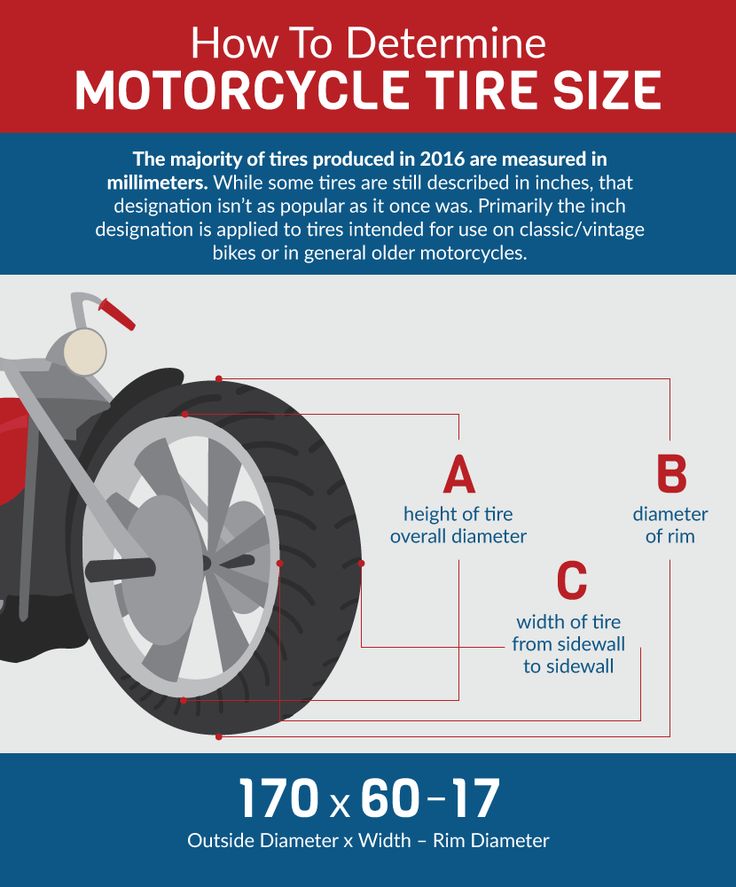 Light truck tires are designed to be used on vehicles capable of carrying heavy cargo or pulling trailers.
Light truck tires are designed to be used on vehicles capable of carrying heavy cargo or pulling trailers.
Similarly, "T" stands for "temporary" and is for your spare tire. If you see "ST," that means "special trailer." A special trailer tire is never installed on the drive or steer wheels. It's only intended for use on trailer axles.
The first number to appear in your tire size information is the width, in millimeters, of the correct tires for your vehicle: P225/70R16 91S.
Tire width always refers to the measurement from one sidewall to another. Thus, a tire with the measurement "P225" is for a passenger vehicle and has a nominal width of 225 millimeters.
After the slash mark, the next number you see is for the tire's aspect ratio, which essentially tells you how tall your tire's profile is: P225/70R16 91S. Aspect ratios are delivered in percentages. Tire makers calculate the aspect ratio by dividing a tire's sidewall height by its width.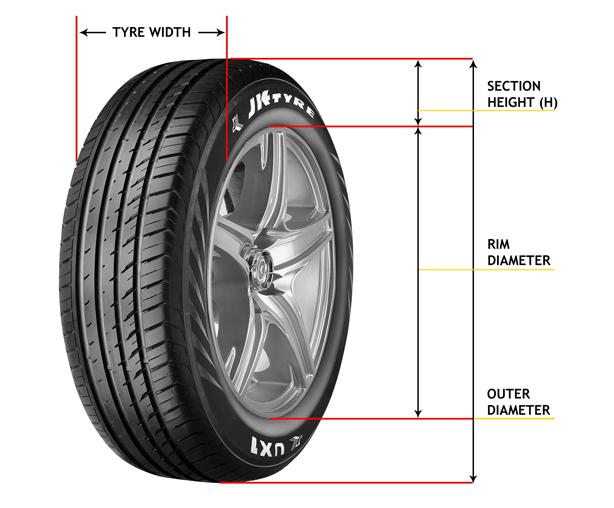 If a tire has an aspect ratio of 70, it means the tire's height is 70% of its width.
If a tire has an aspect ratio of 70, it means the tire's height is 70% of its width.
Lower aspect ratio tires, such as a 60 series, generally offer vehicle handling performance advantages over higher aspect ratio tires, such as a 75 series.
After the aspect ratio comes a letter to indicate the tire's construction: P225/70R16 91S. "R" refers to the internal structure of your tire and gives you a general idea of its stability.
There are two types of construction that you may see on the sidewall of a tire
"Bias-ply" tires were used on automobiles and light trucks until the '70s," reports the classic car site, Hemmings. But radial tires represent the vast majority of tires on the road in the United States today. In fact, you will almost always see the letter "R" on tires as radial tires have been the industry standard for over 40 years. Radial construction means the tire's internal ply cords are oriented in a radial direction (at 90 degrees to the centerline of the tread).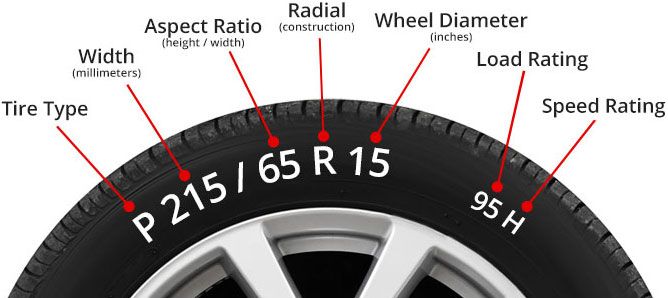
The next number is the wheel’s diameter. For example, a tire with the P225/70R16 91S would fit a rim with a 16-inch diameter.
Take note: if you decide to change your rims' size, you will also need to get new tires that are compatible with the change in size. Tires designed to fit a 16-inch wheel diameter will not stretch to fit on new 18-inch rims.
View Other Common Diameter Sizes:
14-Inch Diameter Tires
15-Inch Diameter Tires
17-Inch Diameter Tires
18-Inch Diameter Tires
19-Inch Diameter Tires
20-Inch Diameter Tires
21-Inch Diameter Tires
22-Inch Diameter Tires
The next figure needed to read tire size numbers is your tire's load index. The load index tells us how much weight, in pounds, the tire can support when fully inflated: P225/70R16 91S.
It is called the load "index" because the figure doesn't tell us the precise number of pounds the tire can support, at least not by itself. Instead, the number corresponds to a specific load capacity listed in an index. Beginning with one and ending with 150, numbers in the load index represent carrying capacities of 99 to 7385 lbs.
Instead, the number corresponds to a specific load capacity listed in an index. Beginning with one and ending with 150, numbers in the load index represent carrying capacities of 99 to 7385 lbs.
Additionally, you may not find this number present on all tires. This is because the load index is not required by law to be printed on tires. If there is no load index measurement on your tires, check the owner's manual or contact your local Bridgestone tire dealer for more information.
The final figure in a tire size sequence is the speed rating indicated by a letter: P225/70R16 91S. Just as your load index number corresponds to a particular load, your speed rating letter corresponds to a specific speed capability based on a standardized laboratory test.
For example, a tire with a speed rating "S" is rated for up to 112 mph, while a tire rated "R" is up to 106 mph. Remember that this isn't a recommended cruising speed, but rather the maximum speed that tire type can withstand. Of course, you should always follow legal speed limits on roadways.
Of course, you should always follow legal speed limits on roadways.
Here are the most common letters for speed ratings and their corresponding maximum speeds:
Tires with higher speed ratings tend to offer increased handling performance. Replacement tires must have the same or higher speed rating to maintain vehicle speed capability. If a vehicle has tires with different speed ratings, the speed rating of the "slowest" tire dictates the vehicle's top speed.
Like the load index, the speed rating is not required by law to be listed on all tires. If your tires do not have the speed rating listed, your owner's manual will have the relevant information for your model's stock tire type.
You may find "M+S" or "M/S" after the main tire size sequence on some tires.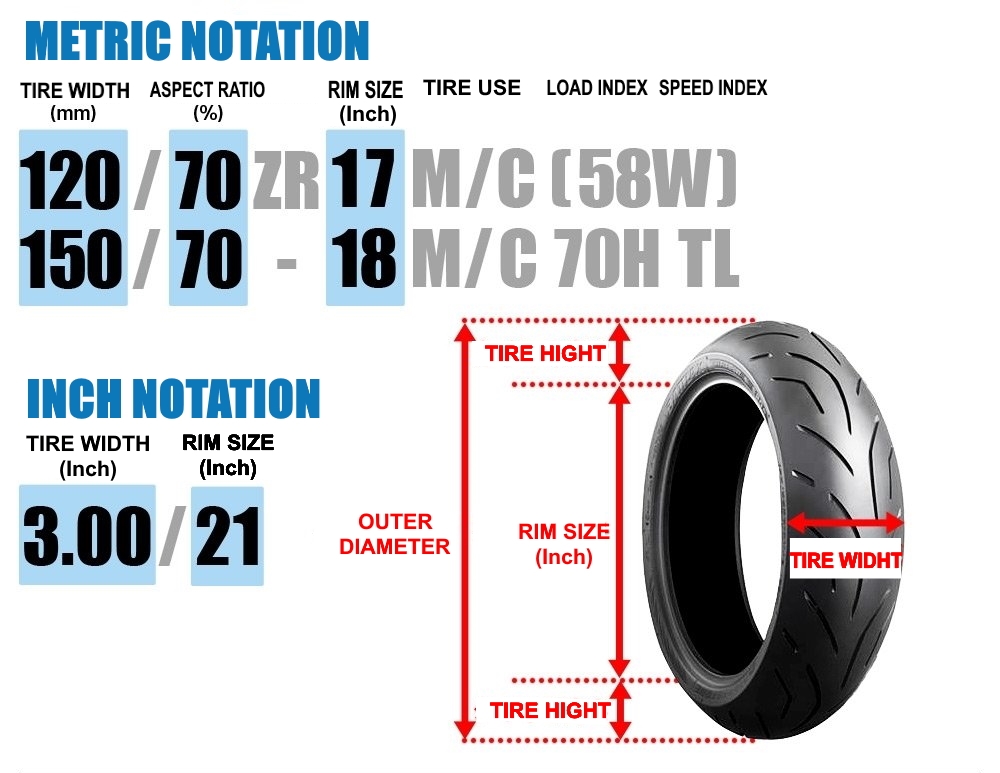 This indicates that the tire has some capacity to handle snow and mud conditions. This indication is common on most radial or "R" type tires.
This indicates that the tire has some capacity to handle snow and mud conditions. This indication is common on most radial or "R" type tires.
You may notice another set of letters and numbers on your tire's sidewall beginning with "DOT." This is not an indication of tire size, but rather that the tire complies with Federal Motor Vehicle Safety Standards. The "DOT" stands for Department of Transportation and is followed by the tire identification number.
The first two letters or numbers after DOT refer to the manufacturing plant where the tire was produced and the last four numbers indicate the week and year the tire was made. The numbers 4318, for instance, indicate that the tire was manufactured during the 43rd week of 2018.
While it's certainly possible to upgrade your tires' size, it's usually best to stick to your manufacturer-recommended tire size for optimal performance. Increasing the size of your tires may give your car more ground clearance, but it may also affect handling, drivetrain performance and fuel economy. Keep in mind the changes to key figures mentioned above, such as load index and speed rating, and how they may affect your vehicle's capabilities if you decide to increase tire size.
Keep in mind the changes to key figures mentioned above, such as load index and speed rating, and how they may affect your vehicle's capabilities if you decide to increase tire size.
Once you know how to read the numbers on tires, you can explore tires by size and narrow down your tire options quickly. Compare tire sizes online or visit a Bridgestone tire dealer near you for help.
Replacing car rims is not an annual procedure. The condition of domestic roads, the consequences of an accident, many years of mileage - no matter what negative factors affect your wheels, the overall final result: replacement. When selecting new disks, it is necessary not only to determine the type of product, but also to take into account all the significant parameters of the disk. And here the questions arise before the car owner: how to find out the width of the rim of the disk, how to find out the diameter of the hub on the disk and other important characteristics.
Your vehicle may only be fitted with rims that match exactly the model of your vehicle. If you spend a significant amount of money on products with inadequate performance, you run the risk of experiencing the following problems:
disks simply do not fit in size, they will be impossible to install;
installation is possible, but soon there will be a negative impact on the technical condition of the car and / or road safety.
Don't waste your money and, more importantly, don't risk your own safety. When buying new discs, immediately select the product that is most suitable for your car in all basic parameters. This approach will ensure trouble-free movement, as well as long-term trouble-free operation of the suspension and chassis as a whole.
What characteristics should be of interest to the car owner in the first place? The main significant parameters of rims:
Disc diameter - the mounting fit diameter of the annular / outer part of the rim.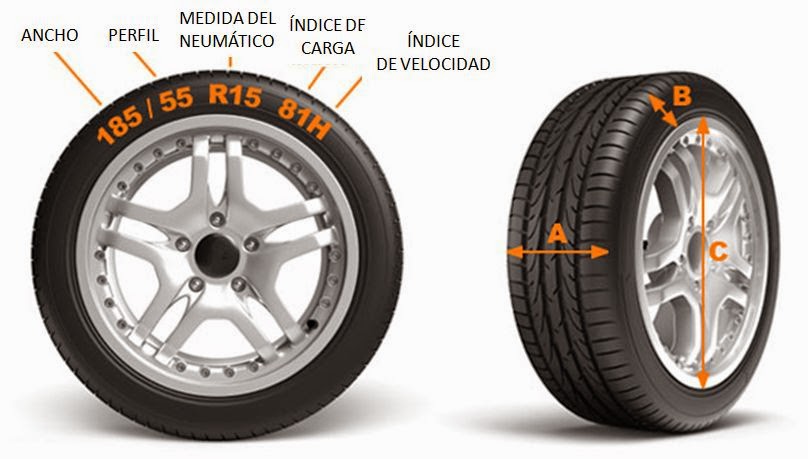 Designated in inches.
Designated in inches.
Disc width, wheel rim width. Specifies the width of the tire to be installed. The indicator is indicated in inches.
DIA is the diameter of the hole for the wheel hub. The value is in mm.
ET - disc offset in mm. Determines the depth of wheel recession in the car arch.
Number of mounting holes. It must exactly match the nominal value for reliable fixation of the car wheel on the hub.
PCD - diameter of mounting holes. With respect to this quantity, high measurement accuracy is required! Deviations are not allowed.
Some values are traditionally measured in inches, others in millimeters. How not to get confused, how to find out the width of the disk in inches or the diameter of the hole on the disk, if you do not do this work daily? Finding, determining or accurately measuring the necessary indicators is a difficult task for a person who is far from the car service industry.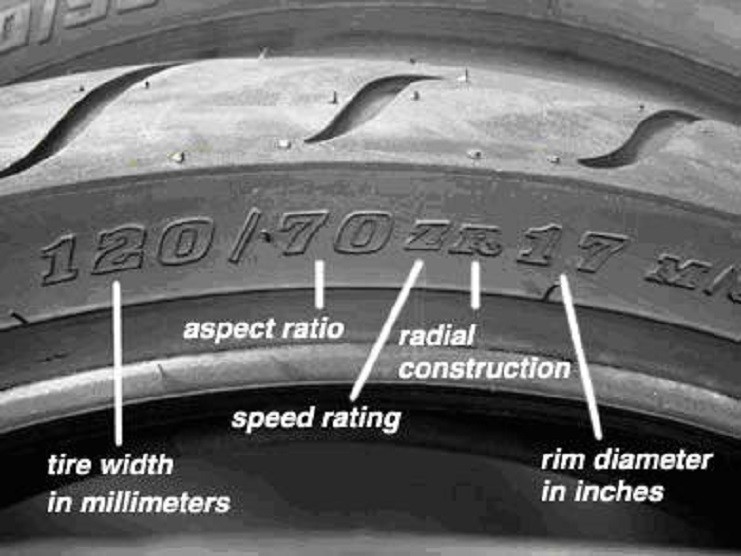
Is it really that complicated? Let's take a closer look and answer questions from motorists.
It is usually not necessary to measure all the parameters yourself. But how can you find out the width of the rim of an alloy wheel or the diameter of a car wheel without taking measurements? Auto manufacturers indicate the required parameters on the original branded discs. The marking is standard, the same for steel and alloy wheels.
Remove the spare tire from the trunk or remove the wheel from the car. Read the inscriptions, most often on the inside of the disc. As a rule, 3 main parameters are indicated there: diameter, width and reach. For example: 5.5J x 13, where the first value 5.5J is the width of the disc in inches, and the second is the diameter, also in inches. The inscription ET35: the departure value in millimeters is 35. Instead of ET, the designation OFFSET or DEPORT is found - it depends on the country of origin.
It can also be marked, for example, d54.1, which means DIA - the size of the hole for the hub is 54.1 mm. This inscription answers the question how to find out the inner diameter of the disc and even how to find out the size of the hub on the disc - look for such a marking, this is important.
If numbers are present, say 5x120, then you know the number of seat bolts (5) and PCD is the diameter of their location (120 mm).
It is even easier for the owner of the car if he has the owner's manual for the vehicle. The algorithm of actions is very simple: open, study, select new disks in accordance with the manufacturer's recommendations. It is almost impossible to make a mistake in this case.
However, not all motorists are so lucky. Let's say there are no instructions, the car is old, and non-native disks were installed by the previous owner - then there is no information in principle. It's OK. There is always a back-up plan for this. Namely, independent action.
It's OK. There is always a back-up plan for this. Namely, independent action.
Taking measurements yourself is not as difficult as it seems.
The easiest way to count the number of mounting holes is from 3 to 6.
Using a tape measure, ruler or caliper on a disassembled wheel, you can measure the parameters of the diameter of the central hole, the width of the disc.
PCD parameter: how to find out the diameter of the holes on the discs? First, measurements are taken with a caliper, then calculations are made using special formulas.
In the table you can see which PCD values apply to different brands of passenger cars.
PCD value in mm | Car brand |
| 98 | Citroen, Fiat, Alfa-Romeo, LADA, Lancia, Peugeot, Skoda, Seat |
| 100 | Audi, Cooper, BMW, Chrysler, Citroen, Chevrolet, Daewoo, Daihatsu, Fiat, Hyundai, Honda, Jeep, Kia, Mitsubishi, Nissan, Mazda, Opel, Proton, Renault, Rover, Subaru, Peugeot, Skoda, Seat, Suzuki, Volkswagen, Toyota |
| 108 | Audi, Ford, Citroen, Mazda, Land Rover, Peugeot, Jaguar, Renault, Volvo, Saab |
| 110 | Opel, Fiat, Alfa-Romeo, Saab |
| 112 | Audi, Ford, Chrysler, Mercedes-Benz, MCC-Smart, Skoda, Volkswagen, Seat |
| 114. | Chevrolet, Citroen, Chrysler, Daewoo, Daihatsu, Dodge, Jeep, Fiat, Ford, Hyundai, Honda, Lexus, Kia, MCC-Smart, Land Rover, Mitsubishi, Mazda, Nissan, Peugeot, Rover, Renault, Subaru, Suzuki, Volvo , Toyota |
| 115 | Chrysler, Chevrolet, Opel |
| 118 | Citroen, Nissan, Fiat, Peugeot, Renault, Opel |
| 120 | BMW, Volkswagen, Hyundai |
| 120.7 | Jaguar |
Certain deviations are allowed for individual parameters without adversely affecting vehicle handling and
suspension condition.
Disc diameter. Alloy wheels are allowed 1 inch oversize.
Disc width. Tolerance is 0.5 inches.
DIA - The size of the center hole should ideally match the diameter of the hub. Permissible deviation up to +0. 3 mm.
3 mm.
ET - it is desirable to comply with standard sizes. It is permissible to change the overhang up to +/- 2 mm.
Pay attention! Parameter PCD is determined with absolute precision. The number of mounting holes must exactly match the declared values. Errors are not allowed.
A serious approach to buying new discs ensures the safety of travel and eliminates the issue of unnecessary financial costs for suspension repairs. Let's summarize.
When choosing new rims, consider 6 basic parameters. As well as manufacturer's recommendations for your car model.
Read the instruction manual in detail - this is the easiest way to find the necessary characteristics.
There are no instructions, but the car is equipped with branded discs - look at the markings on the inside of the disc.
Determine the missing values yourself. Be attentive to those indicators, the measurements of which do not allow errors.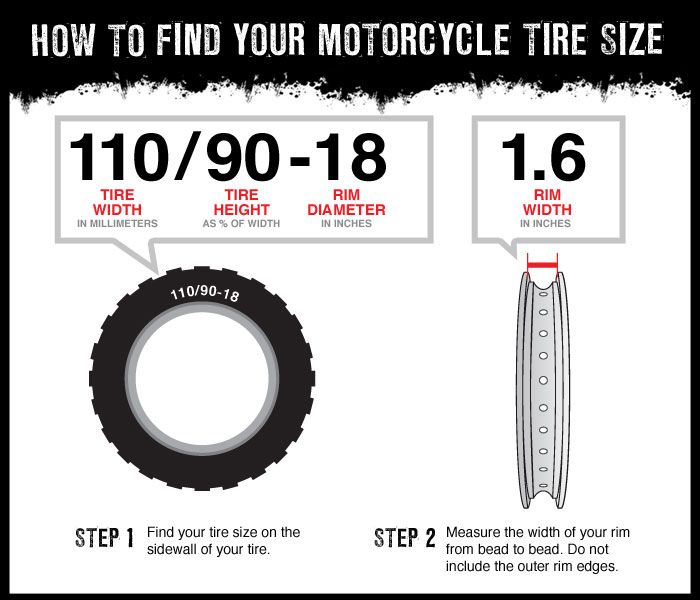
Choose the right wheels for your car.
Without accurate rim width data, it is impossible to select tires for a car, and sooner or later every driver faces the need to determine it. We have prepared detailed instructions that will help you independently determine the width of the rim and tell you about all the nuances of selection.
Wheel rim width is a dimensional characteristic that determines the distance from one edge of the bead to the other. Determination of the width is necessary for the correct selection of tires and their correct installation.
Important features of the rim width:
Width is calculated in inches, therefore, when self-measuring with a tape measure, the obtained data must be divided by 25.4 mm. The rim size ranges from 3.5 to 13 inches, which corresponds to a width of 87.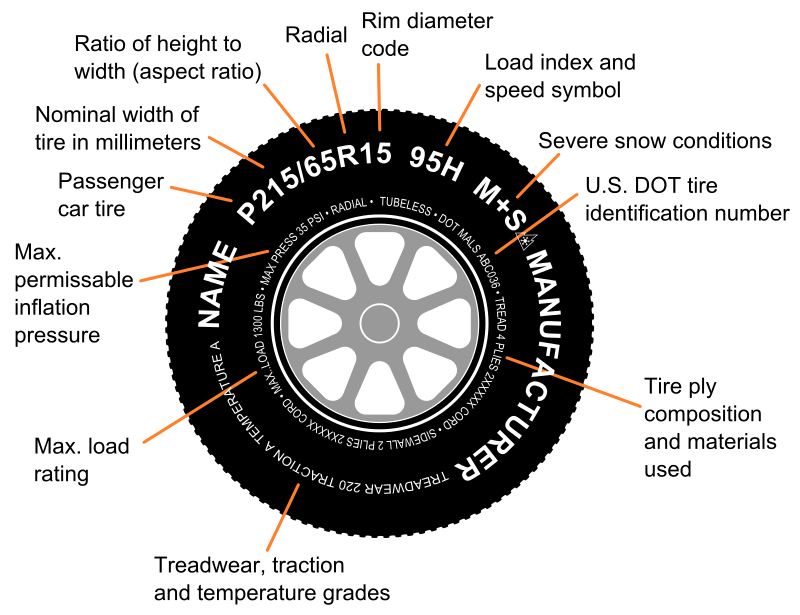 5 to 279.4 mm. One division step is equal to 0.5 inches.
5 to 279.4 mm. One division step is equal to 0.5 inches.
For each rim size, the rim width is different and has its own allowable variation. For example, a R15 wheel can have a rim width of 3.5 to 7.5 inches, while an R18 can have a rim width of 7.5 to 13 inches.
Standard technical guidelines for tire selection recommend not exceeding the rim width by more than 25%. Keeping the proportions of the width of the wheel and tire will help to avoid damage to the wheel and maintain a high level of driving performance of the car.
The rim width is related to other wheel characteristics. The width of the disc affects the size of the tires, the load on the chassis and changes the driving characteristics of the car. An example is the effects of increasing the width of the rim:
In winter, wide rims perform better on off-road and loose snow, and they also effectively resist skidding due to the increased tire contact patch.
Large wheel area increases wheel load capacity, making wide rim models ideal for SUVs and commercial vehicles.
However, there are also negative aspects. In summer, wide-profile tires that are mounted on wide rims are more prone to wear, as the larger contact area wears out the rubber faster when braking.
Increasing the width of the rim also affects the total mass of the wheel, which in turn affects the economy of the vehicle. The load increases during the ride, the oscillations of the chassis increase and the suspension elements wear out faster.
Consider the consequences of installing wheels that do not meet the technical recommendations of your car and differ from the factory size.
Non-standard disc rim width changes wheel volume and offset, which leads to contact with body elements and rapid tire wear.
There is an effect of increasing or decreasing the roll due to a change in the center of gravity. Its displacement up or down leads to unpredictability in control.
Its displacement up or down leads to unpredictability in control.
Wheels protrude excessively or insufficiently from under the wheel arches, as a result of which the load on the wheel bearings increases and the vehicle's handling suffers.
The width of the rim of the rim is written in the marking, which is located on the outside of the rib, or in the technical documentation of the model.
For example:
6.5B×15 h3 5/112 ET39 d57.1
If it is not possible to recognize the marking, then you can measure the width yourself:
We fix the disk up with an edge (vertically).
We take any tool with a division system in millimeters (caliper, tape measure or regular ruler of sufficient length).
We measure the distance from edge to edge without capturing the sides. It is important to position the tool exactly perpendicular to the disc.